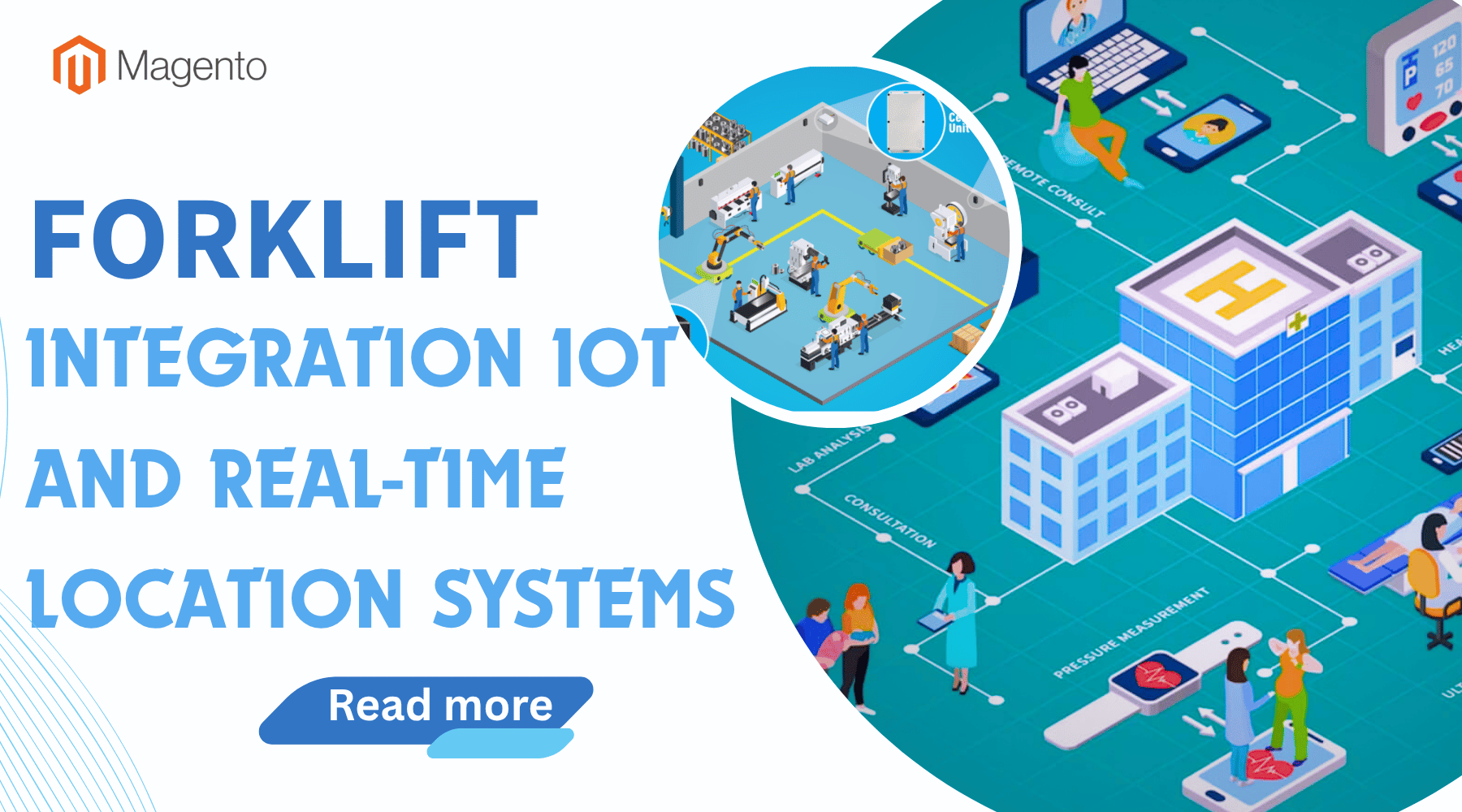
The rise of e-commerce and the growing demand for faster, more accurate deliveries have rapidly evolved logistics and warehousing operations. In response, businesses are increasingly prioritising operational visibility and control by turning to smarter, tech-driven solutions that allow them to streamline their workflows and maintain a competitive edge.
One such innovation gaining momentum in the logistics and supply chain sector today is the integration of the humble forklift truck with internet of things (IoT) technology and real-time location systems (RTLS). This integration has since transformed traditional forklifts into intelligent, connected machines capable of providing continuous insights into their movements and usage patterns.
But how does this integration process really work, and can it really improve productivity and overall efficiency? In this article, let’s examine all these things along with the direct impact of adopting this transformative technology on a business’s bottom line:
Table of Contents
I. How Forklift Integration with IoT and RTLS Works
Forklift integration with IoT and RTLS involves equipping forklifts with technology that enables real-time data collection and communication. In particular, IoT refers to a network of physical devices embedded with sensors and software that collect and exchange data.

RTLS, on the other hand, uses technologies such as GPS, RFID, Bluetooth Low Energy (BLE), or Ultra-Wideband (UWB) to track the precise location of moving assets within a defined space in real time. When these technologies are combined and applied to forklifts, they provide continuous insights into each vehicle’s position, load status, operating condition, and overall performance.
The integration process typically begins with a thorough assessment of the current forklift fleet and warehouse environment. This allows companies to determine which forklifts are most suitable for retrofitting and which workflows would benefit most from real-time tracking.
Next, hardware such as GPS modules, RFID readers, weight sensors, and telematics devices are installed on the forklifts. These sensors gather critical operational data, such as speed, lift height, fuel consumption, battery levels, and load weight. Simultaneously, RTLS infrastructure is set up within the facility to enable accurate location tracking.
Once hardware installation is complete, the forklifts are connected to a centralised software platform, often cloud-based, that allows managers to monitor activity from a single dashboard. The software integrates with existing warehouse management systems (WMS) or enterprise resource planning (ERP) platforms, enabling seamless communication between systems.
After technical setup, a calibration and testing phase ensures accuracy and system reliability. Finally, staff are trained to use the new tools, with emphasis on safety protocols and process optimisation.
II. Business Benefits and Bottom-Line Impact
1. Real-Time Visibility and Control
One of the most immediate advantages of the integration of forklifts with IoT and RTLS is the ability to gain real-time visibility over forklift operations. Managers can track the exact location and task status of each forklift on the warehouse floor. This makes it easier to optimise traffic flow in high-traffic areas and coordinate task assignments more effectively.
Instead of manually dispatching forklifts, the system can automatically allocate the nearest available vehicle to a task, based on location and current workload. As a result, it speeds up operations and improves customer satisfaction through faster order fulfilment.

From a financial standpoint, better visibility results in more efficient asset utilisation, fewer idle hours, and reduced fuel or energy consumption. Over time, these savings accumulate significantly, thus enhancing the company’s cost-efficiency.
2. Increased Safety and Compliance
Workplace safety remains a top priority, particularly in regulated markets such as Singapore, where non-compliance with safety standards can result in heavy fines and reputational damage. When IoT and RTLS are integrated, forklifts can be programmed to avoid restricted zones or slow down automatically when approaching pedestrians or high-risk areas. Additionally, real-time monitoring can detect unsafe driving behaviours, such as abrupt braking or cornering at high speed, and issue instant alerts to the operator or supervisor.

Given that forklift integration with IoT and RTLS integration helps address risks proactively, businesses can protect their employees and reduce the likelihood of costly accidents, legal liabilities, and operational disruptions. This has a direct impact on the bottom line, as fewer incidents lead to lower insurance premiums, less downtime, and improved workforce morale.
3. Higher Operational Efficiency

IoT-connected forklifts can also deliver granular data on every trip they make—how long it takes, the distance covered, and the productivity of each operator. This data enables businesses to identify inefficiencies in workflows and revise warehouse layouts for better flow and task sequencing. Through intelligent routing and prioritisation, forklifts can complete more tasks in less time, while reducing unnecessary movement and energy waste.
In environments where time is money, such as just-in-time (JIT) supply chains or high-volume e-commerce hubs, these efficiency gains significantly improve fulfilment rates.
4. Predictive Maintenance and Reduced Downtime
Traditional maintenance strategies are often reactive. Typically, businesses wait for a forklift to fail before taking action. With IoT integration, businesses can shift to a predictive maintenance model, where sensor data is used to detect early signs of wear and tear. In case of anomalies in battery temperature, motor vibration, or oil levels, alerts are triggered that prompt timely servicing before a major failure occurs.

This predictive approach significantly reduces unexpected breakdowns and extends the life of the equipment. Additionally, fewer disruptions mean higher uptime, which translates to more productive hours per forklift.
Now that logistics and warehousing operations continue to navigate growing demands and rising customer expectations, the adoption of intelligent technologies like forklift-IoT-RTLS integration signals a shift toward more proactive, data-led decision-making. Investing in such innovations modernises day-to-day operations and opens the door to long-term transformation, where efficiency and real-time responsiveness are the norm. For businesses ready to future-proof their operations, now is the time to move beyond traditional practices and embrace the next evolution in logistics intelligence.
Conclusion
The integration of forklifts with IoT and RTLS technologies is no longer a futuristic concept—it is a strategic imperative for businesses seeking to remain agile and competitive in an increasingly demanding logistics landscape. By combining real-time tracking, data-driven insights, and automated workflows, this transformative solution delivers tangible improvements across visibility, safety, efficiency, and equipment longevity.
Beyond immediate operational benefits, this integration supports a long-term shift toward smarter, more resilient supply chain ecosystems. Businesses that invest in such forward-thinking technologies today are better positioned to meet customer expectations, adapt to market volatility, and achieve sustainable growth in the years to come.
As the pace of digital transformation accelerates, forklift integration with IoT and RTLS stands as a powerful example of how even the most conventional tools—when connected intelligently—can unlock unprecedented value and innovation.











![[SALE OFF] Discount 30% All Premium Extensions On Christmas And New Year 2025 christmas-and-new-year-2025](https://landofcoder.b-cdn.net/wp-content/uploads/2024/12/christmas-and-new-year-2025-1-218x150.png)






